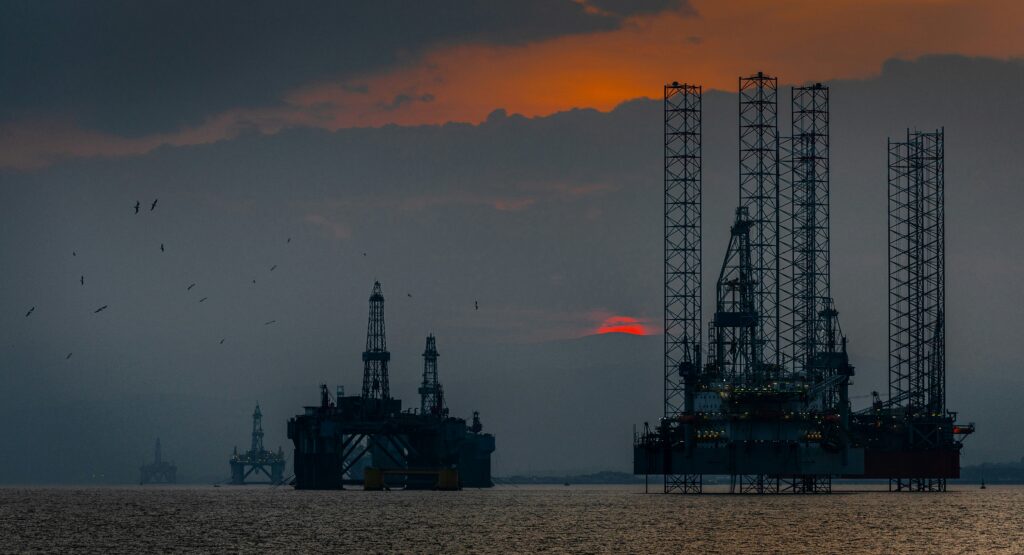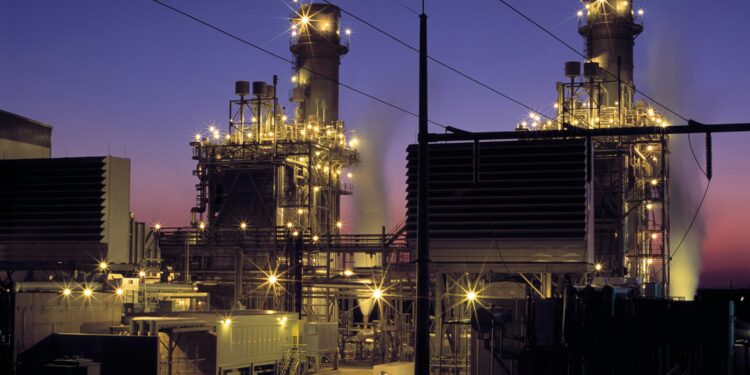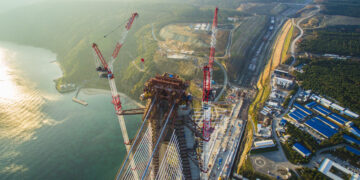NextDecade Corporation (NASDAQ:NEXT) is a U.S.-based energy company focused on the development of liquefied natural gas (LNG) export projects and associated infrastructure. Founded in 2010 and headquartered in Houston, Texas, the company has positioned itself as one of the few pure-play LNG developers in North America, aiming to leverage the United States’ abundant natural gas resources to supply international markets. Its flagship initiative, the Rio Grande LNG project in Brownsville, Texas, is designed to be one of the largest LNG export facilities in the world, with a planned total capacity exceeding 27 million tons per annum once all liquefaction trains are fully operational. This project underscores NextDecade’s mission to meet the rising global demand for LNG while playing a strategic role in the global energy transition.
The company’s operations extend beyond LNG production, as NextDecade also incorporates infrastructure development, long-term LNG sales agreements, and innovative carbon reduction strategies into its growth strategy. A cornerstone of its business model is securing long-term sales and purchase agreements (SPAs) with major global energy players. These contracts provide stability, predictable cash flow, and market credibility that are critical for financing multi-billion-dollar LNG projects. Notably, NextDecade has successfully commercialized contracts for several of its planned liquefaction trains, including high-profile agreements with ConocoPhillips and other major buyers, which anchor demand and provide confidence to lenders and investors.
Environmental responsibility has also been a focal point of NextDecade’s corporate narrative. The company has proposed the integration of carbon capture and storage (CCS) solutions at its Rio Grande LNG site, a move intended to reduce the facility’s carbon footprint and align its business with evolving environmental standards. While execution challenges remain, these initiatives highlight NextDecade’s efforts to balance energy development with sustainability considerations. By seeking to address emissions while delivering LNG at competitive prices, the company is positioning itself as a forward-looking player in a sector under increasing pressure to adapt to ESG expectations.
NextDecade’s business model is highly capital-intensive, with success hinging on its ability to raise the funding required to advance the Rio Grande LNG project through final investment decision (FID) milestones and eventual construction. Despite these challenges, the company has made significant progress in recent years, achieving commercial milestones and strengthening its partnerships. As LNG demand grows globally, particularly in Asia and Europe where nations are transitioning away from coal and diversifying from pipeline gas, NextDecade aims to emerge as a critical supplier of U.S. LNG to global markets. Its Rio Grande LNG project, once completed, will not only add substantial export capacity to the United States but also reinforce the country’s role as a dominant force in the global LNG market.
ConocoPhillips Deal Brings Visibility But Not Certainty
NextDecade recently announced a significant sales and purchase agreement with ConocoPhillips (NYSE: COP), under which ConocoPhillips will buy 1 million tons per annum (mtpa) of LNG for a period of 20 years from NextDecade’s planned Rio Grande LNG Train 5 in Brownsville, Texas. On paper, this is a milestone. It represents a free-on-board arrangement with pricing linked to the Henry Hub index, anchoring demand for a large portion of future output.
While this deal appears bullish, it comes with an important caveat: the agreement is contingent on a Final Investment Decision (FID) for Train 5. NextDecade has previously indicated its aim to reach an FID by the fourth quarter of 2025. However, history shows that such multi-billion-dollar LNG megaprojects are highly vulnerable to financing delays, regulatory scrutiny, and construction challenges. The ConocoPhillips deal may push commercialization forward, but it does not eliminate the financing and execution risks that remain central to the bearish case.

CHECK THIS OUT: Saudi Arabia Wants CEL-SCI (CVM)’s Multikine Now! and Aligos Therapeutics (ALGS) Doubles Cash to $122.9M.
Heavy Capital Requirements and Financing Uncertainty
The Rio Grande LNG facility is structured in phases, with Trains 1 through 3 forming Phase 1 at 17.6 mtpa capacity. Trains 4 and 5 are expected to add another 10.8 mtpa. However, each train requires billions of dollars in upfront capital expenditures. For Train 5, securing offtake agreements like ConocoPhillips’ 1 mtpa helps, but investors must remember that the bankability of the entire project hinges on securing financing at a time when global interest rates remain elevated.
Rising debt costs, limited equity appetite, and the sheer size of capital needed create enormous financing risk. Unlike integrated oil majors that self-finance projects, NextDecade relies heavily on external capital markets. Any delay in financing could derail timelines, dilute shareholders through equity raises, or lead to unfavorable borrowing terms that eat into long-term profitability.
Execution Risks: Cost Overruns and Delays Are Common
Even assuming FID is reached for Train 5, execution risk looms large. LNG terminals are among the most complex energy projects in the world, with a track record of delays, cost overruns, and logistical challenges. Inflation in construction materials, higher labor costs, and supply chain disruptions for specialized equipment could drive actual project costs far above current estimates.
For shareholders, this means the gap between projected returns and realized cash flows can be wide. If Train 5 faces overruns similar to other global LNG projects, margins could erode long before revenue even begins. These delays would also reduce investor confidence and weigh on stock performance.
Regulatory and Environmental Headwinds
NextDecade has already encountered significant regulatory challenges. In 2024, a U.S. appeals court vacated the Federal Energy Regulatory Commission (FERC) authorization for the Rio Grande LNG project, citing deficiencies in environmental impact assessments. While the company continues to work through the process, such rulings highlight the vulnerability of LNG megaprojects to legal and regulatory risk.
Additionally, NextDecade withdrew its application for a carbon capture and storage (CCS) project because regulators deemed it underdeveloped. This was supposed to bolster its environmental credibility and ESG narrative. The withdrawal undermines investor confidence in the company’s ability to deliver on sustainability promises, which could be increasingly important as capital markets lean toward ESG-focused investments.
Market Dynamics Pose Additional Risks
Even with long-term contracts, NextDecade remains exposed to broader market risks. LNG demand is growing, but so is supply. Competitors across the United States, Qatar, and Africa are rapidly expanding capacity. If global supply outpaces demand growth, LNG prices could soften, putting pressure on profitability.
Furthermore, the ConocoPhillips agreement and other offtake contracts are indexed to Henry Hub, which ties margins to U.S. gas price volatility. If input prices spike due to supply shortages or infrastructure constraints, NextDecade could face thinner margins despite having long-term sales locked in.
Questionable Valuation Amid Pre-Revenue Status
NextDecade’s valuation has already surged on optimism around the Rio Grande LNG project. However, the company remains pre-revenue on its LNG exports, meaning its market capitalization is almost entirely forward-looking. With a price-to-book ratio exceeding 10x, compared to industry averages closer to 1x, much of the upside is already priced in.
If financing hurdles delay Train 5, or if margins disappoint due to higher construction costs or weak LNG prices, the stock could face severe downside. In other words, NextDecade’s current valuation leaves little margin of safety for investors.
Balance Sheet Strain and Ongoing Cash Burn
NextDecade continues to post significant cash burn as it moves through planning, contracting, and pre-construction phases. Without revenue from LNG sales until at least 2027, the company must continually raise capital to fund its operations. This exposes investors to dilution from equity offerings and rising interest obligations from debt issuance.
Free cash flow remains heavily negative, with estimates of over $2 billion in annual outflows tied to project development. If capital markets tighten further, liquidity could become a major concern, forcing unfavorable financing deals.
Conclusion: More Risk Than Reward at Current Levels
The ConocoPhillips deal for 1 mtpa of LNG over 20 years is a positive step toward securing Rio Grande Train 5, but it does not resolve the broader concerns that weigh on NextDecade’s outlook. The company still faces massive capital requirements, financing uncertainty, execution risk, regulatory headwinds, competitive pressures, and an already stretched valuation.
While the LNG demand story remains intact, NextDecade’s specific challenges make it a high-risk investment with limited near-term reward. For cautious investors, the downside risks—including financing delays, cost overruns, and regulatory setbacks—are too significant to ignore.
READ ALSO: How Globalstar (GSAT)’s Strategic Apple Partnership is Changing the Satellite Game and Intel (INTC)’s Epic Comeback: Why Wall Street May Be Dead Wrong About This “Dying” Chip Giant.






